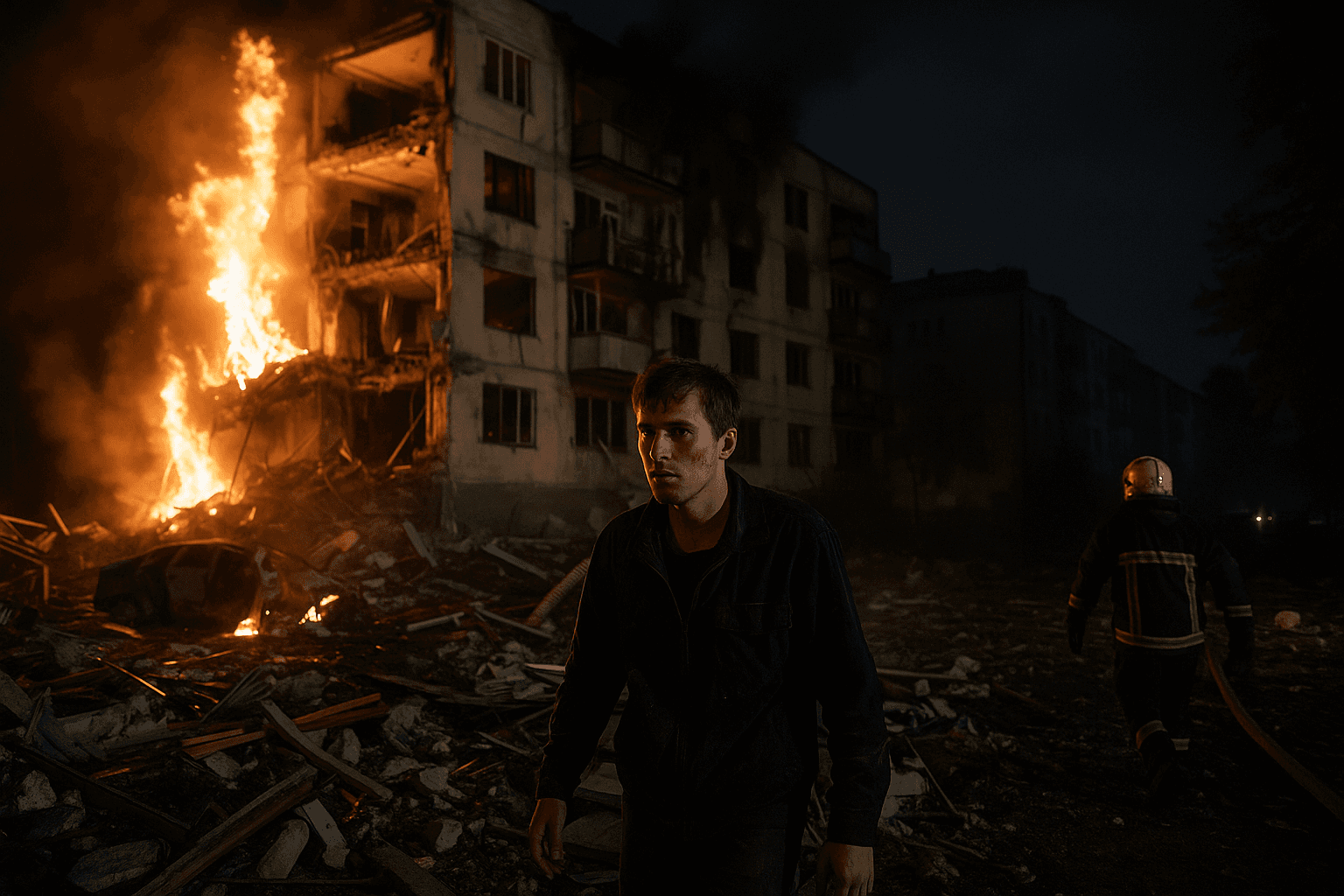Drone strike kills three, injures 16 in southern Russia attack
Russian officials say a major overnight Ukrainian drone strike hit the Black Sea port of Novorossiysk and cities in Krasnodar and Rostov regions, killing three people and injuring at least 16. The incident underscores growing cross border risk from drone warfare, with officials reporting hundreds of drones intercepted and videos circulating of damage to residential and industrial sites.

Russian officials say Ukrainian forces carried out a major overnight drone strike on Nov. 24 to 25 that struck multiple targets across southern Russia, including the Black Sea port of Novorossiysk and populated areas in Krasnodar and Rostov regions. Regional authorities reported at least three people killed and 16 wounded. Officials said the attack damaged several residential buildings, warehouses and industrial facilities, and unverified video circulated on social platforms showing drones striking apartment blocks.
The Russian defence ministry said its forces intercepted hundreds of Ukrainian drones over several regions and above the Black Sea as part of what it described as a broad interdiction effort. Local emergency services reported damage to civilian infrastructure in port and city districts, and Reuters reporters noted statements from Moscow and regional officials and posted imagery and video on social media that depicted smoke and damaged facades at multiple sites.
The strike came amid an intense cycle of mutual strikes between Moscow and Kyiv that has persisted over the past year as both sides increasingly employ unmanned systems for tactical and strategic operations. Novorossiysk is one of Russia's largest Black Sea ports and a hub for energy and bulk cargo exports, making any attack there significant for logistical chains and commercial traffic in the region. Even without immediate reported interruptions to shipping, the targeting of port and industrial zones raises the risk of temporary disruptions, higher maritime insurance costs and greater caution among carriers and commodity traders.
Markets may react to a sustained pattern of cross border strikes through increased energy price volatility and risk premia for shipping and logistics. Insurers that cover maritime operations and port infrastructure could reassess exposure, and regional investors will likely factor elevated security risk into decisions about deployment of capital. For businesses and consumers, repeated infrastructure strikes tend to raise long term costs through higher insurance premiums, increased security spending and the need to rebuild damaged housing and industrial capacity.

From a policy perspective, the incident increases pressure on Russian authorities to bolster air defence and coastal surveillance systems, and it may prompt more aggressive counterstrikes. For Ukraine, the use of swarms of drones reflects a strategy of targeting logistics and energy chokepoints to impose economic and operational costs. Internationally, allies watching the escalation will be concerned about further spillover into commercial shipping lanes and the potential for miscalculation between the combatants.
In strategic terms the event highlights a broader trend in modern conflict where relatively low cost unmanned platforms can produce outsized physical and economic damage. The immediate human toll is clear in the casualty figures released by regional officials. The longer term consequences will depend on whether such strikes become a sustained pattern that compounds economic disruption, drives up the cost of trade and reconstruction, and further militarizes civilian infrastructure in the Black Sea region.


